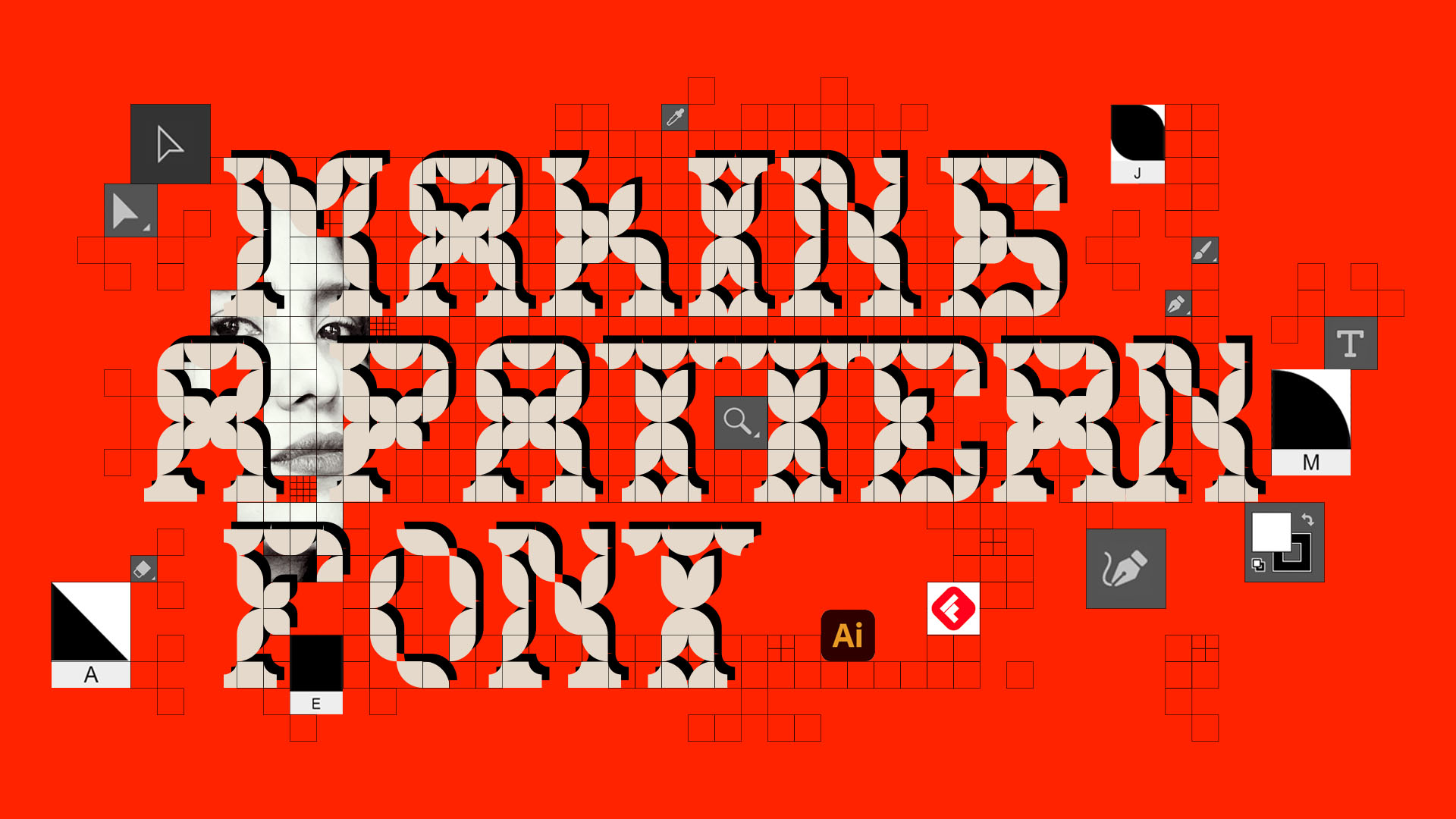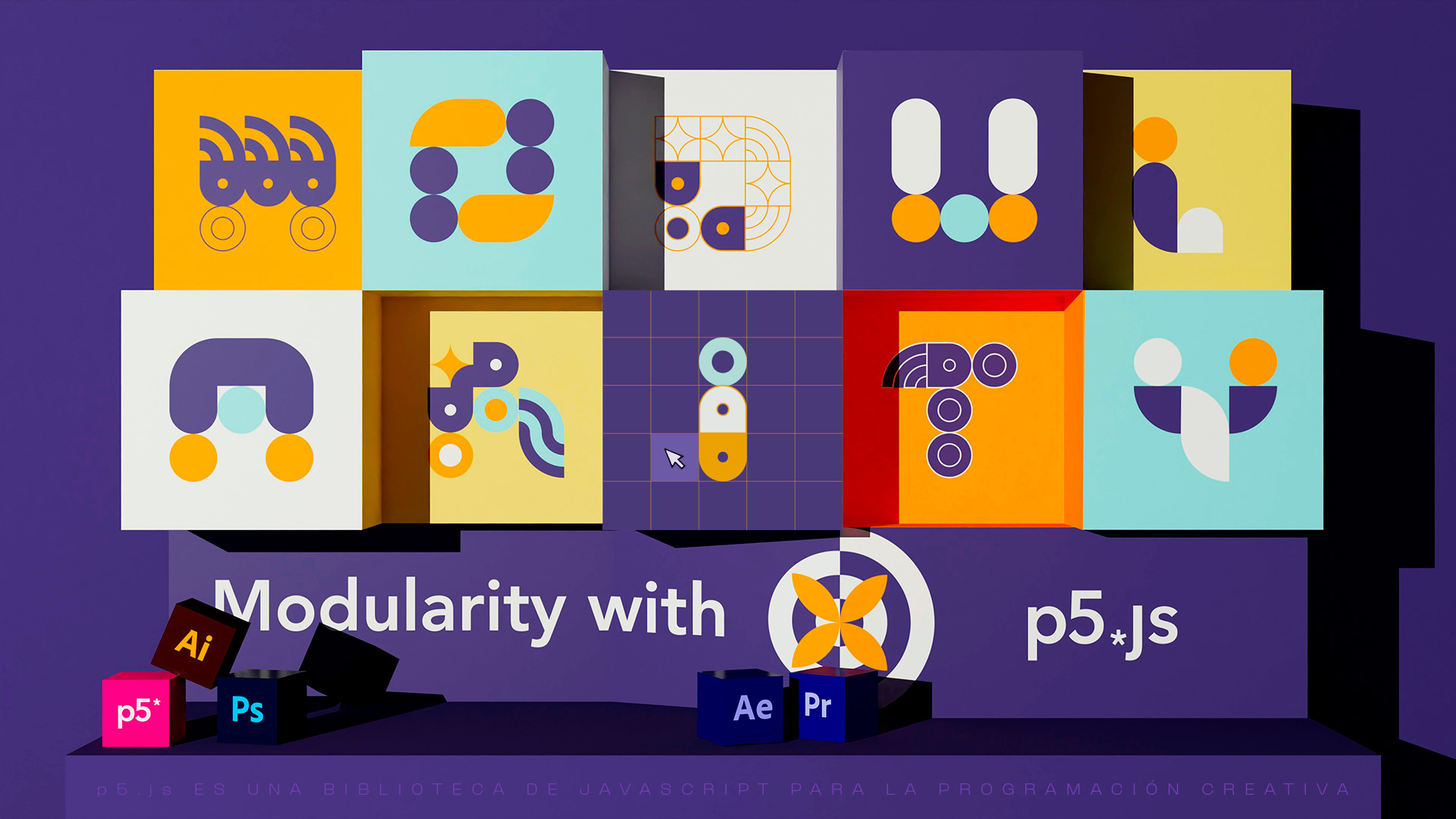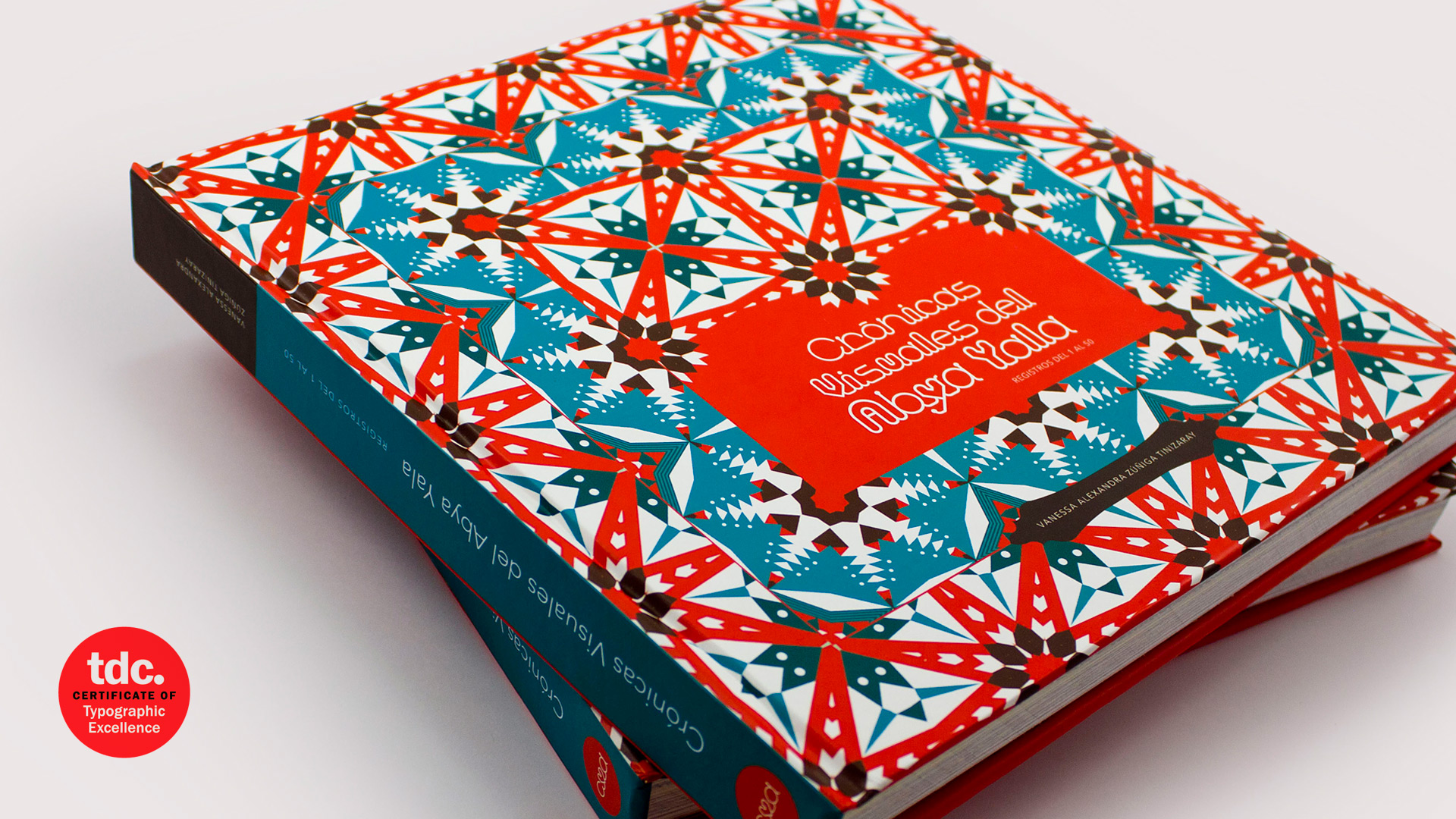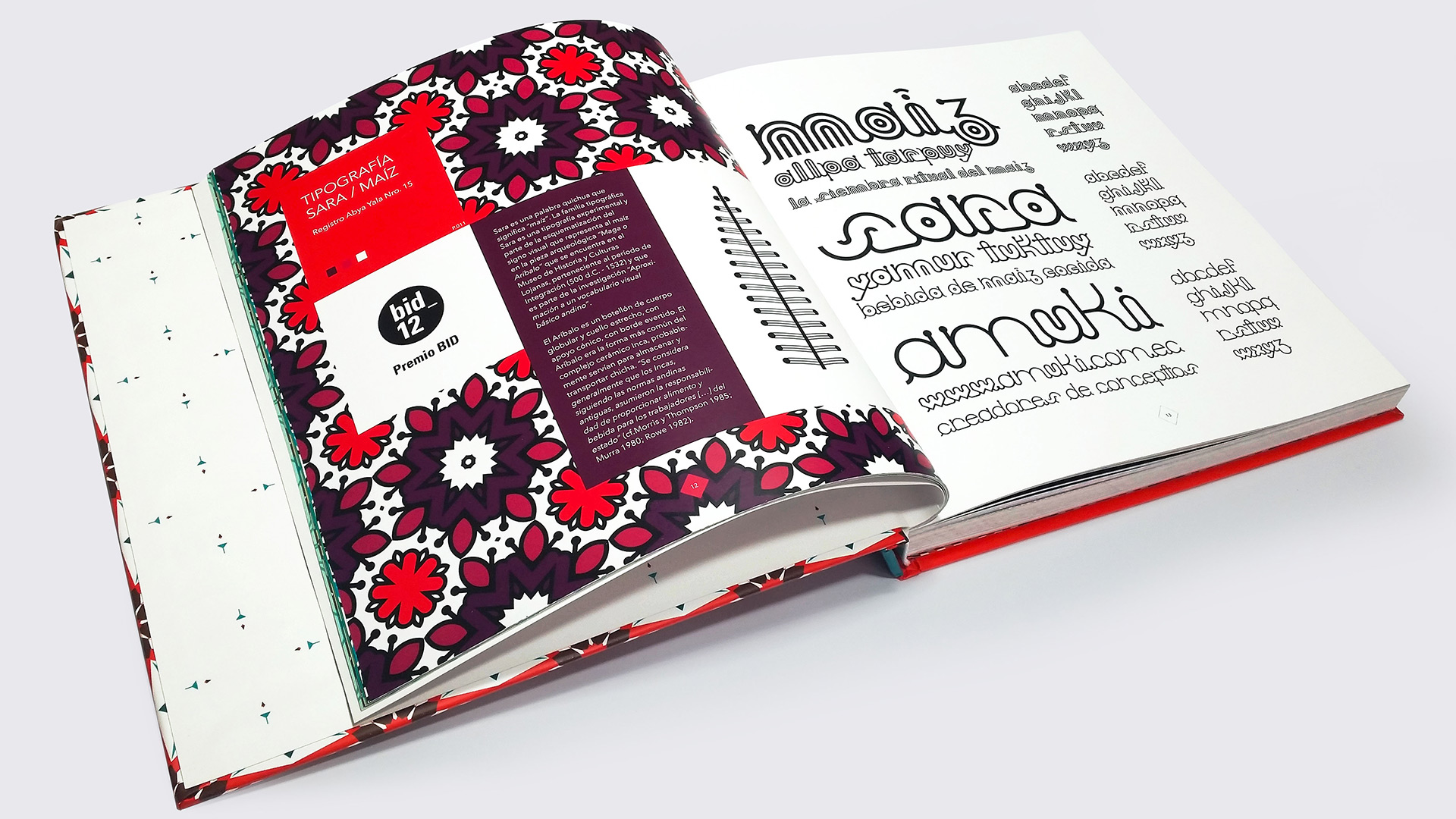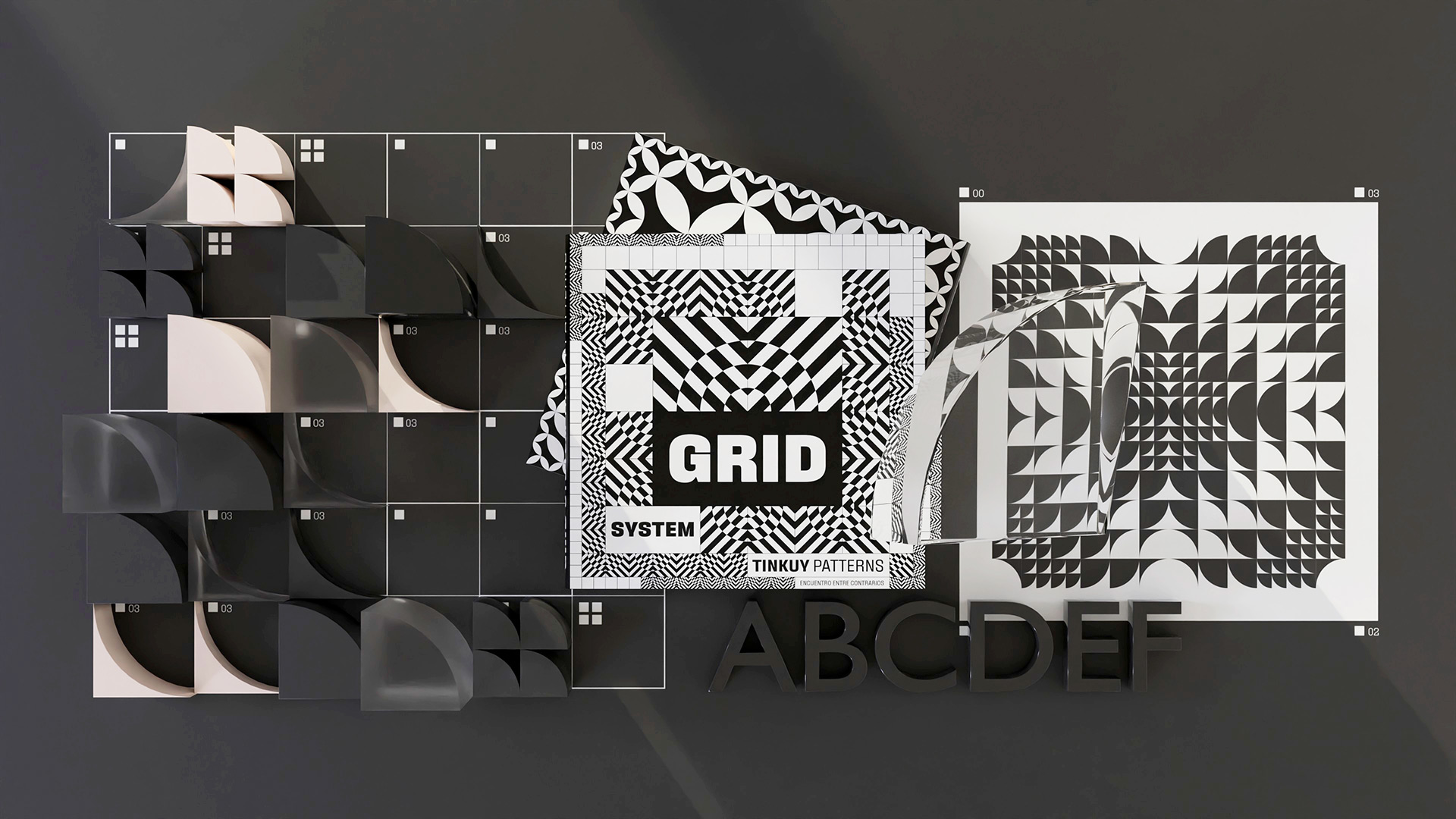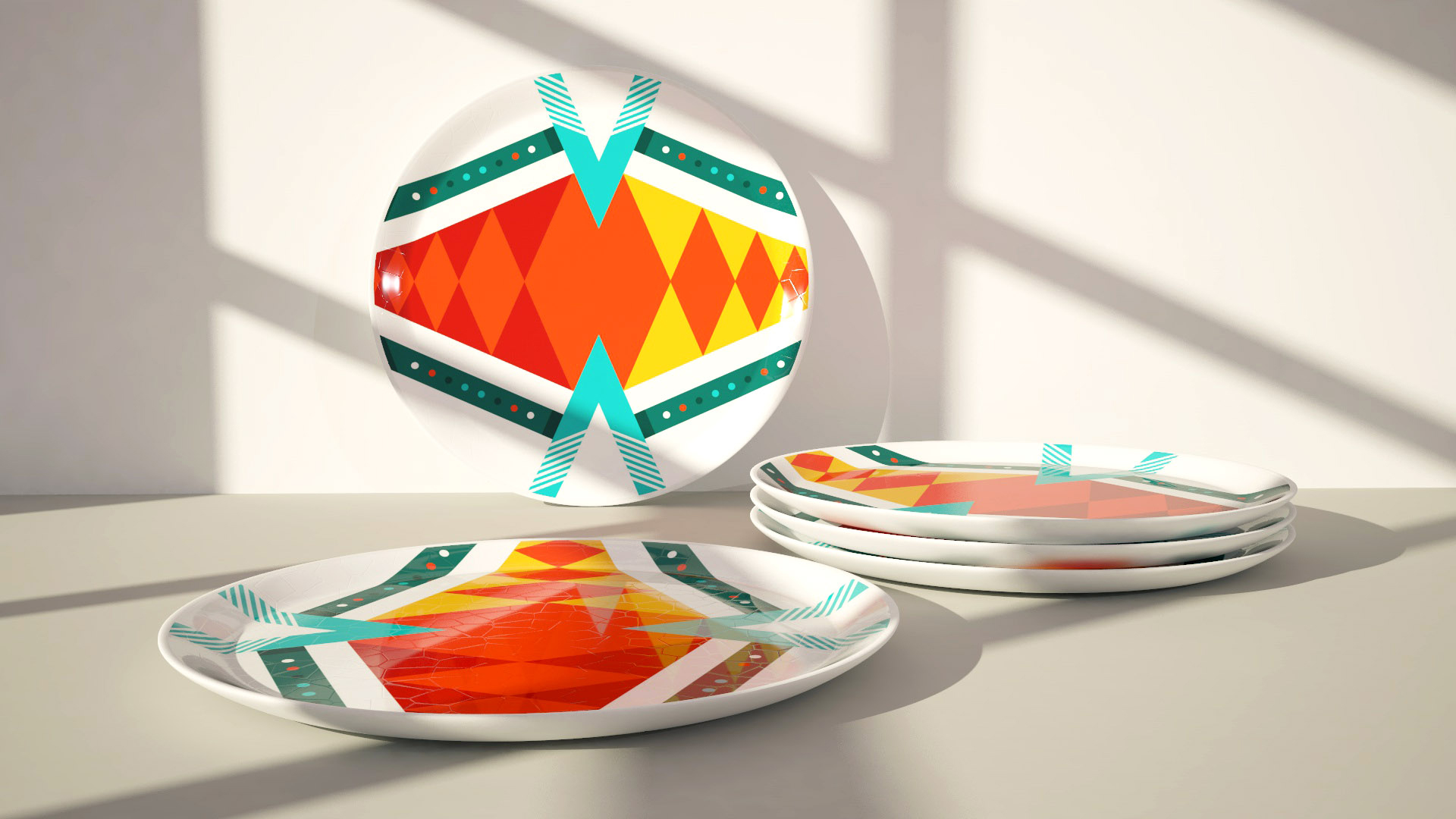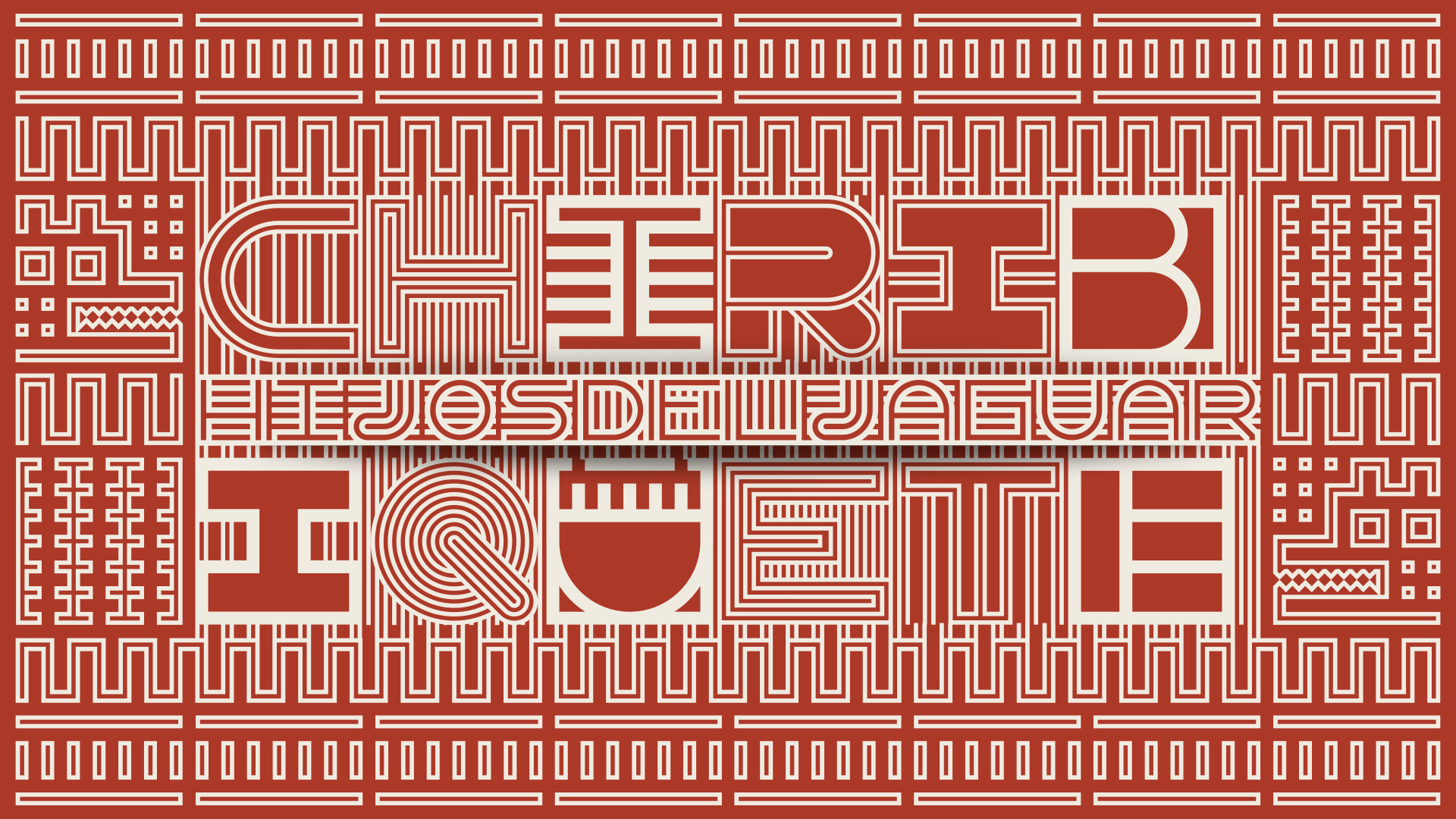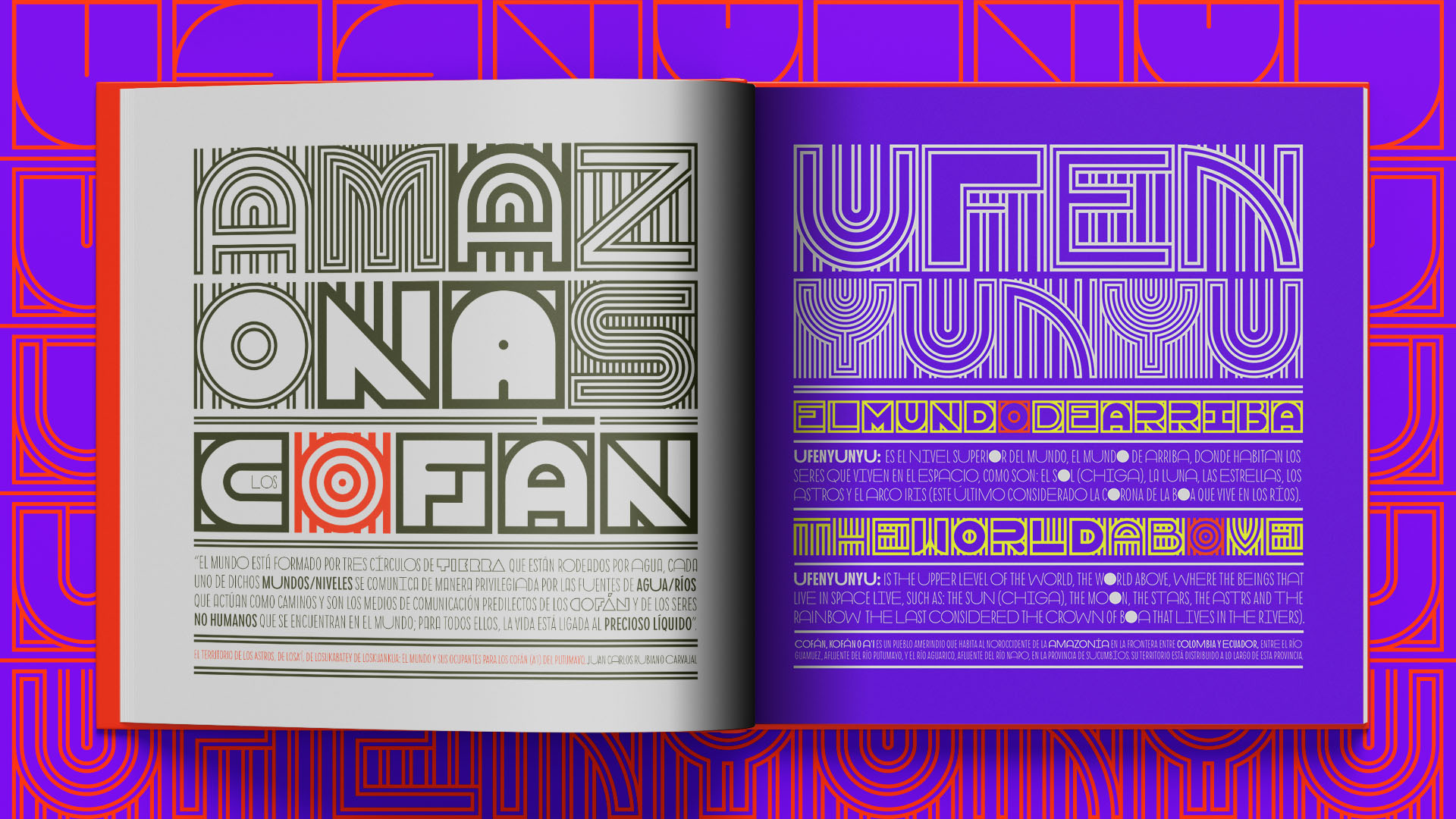About me
I'm Vanessa Zúñiga Tinizaray, designer from Ecuador specialized in experimental type, pattern fonts and typography in motion. My work revolves around researching the visual symbols of the indigenous cultures of Latin America to disseminate their ancestral wisdom through design. With one foot rooted in the past and the other stepping into the future, I offer visual reinterpretations that are in a constant state of evolution.
Known as "Amuki" (inner silence), Vanessa Zúñiga Tinizaray, is an Ecuadorian designer. Her passion has led her to investigate the visual signs of the ancestral cultures of Latin America. In a stage of globalization, her mission is to design, share and teach people to revalue the Latin American cultural heritage, to amplify and translate it globally. Her intention is to learn to appreciate and celebrate that heritage with pride and without prejudice.
Her achievements, after 19 years experimenting in the research project "Visual Chronicles of the Abya Yala", have led her to be a finalist, win an award and two mentions in the Ibero-American Design Biennial, some of her experimental typefaces have been selected in Bienal Tipos Latinos and with her book she has obtained a Certificate of Typographic Excellence from the Type Directors Club, and has also given talks in United States, Francia, Argentina, Bolivia, Colombia, Venezuela, México and Ecuador, as well as workshops on the different methodologies used in the research project, teaching young Latin Americans the importance of research in the creative process.
Her work has been featured in Letterform Archive, Femme Type, Graffica, Computer Arts, Communication Arts, LaTina, among others.
Her work of kinetic typography with the foundry Sudtipos of Argentina for to promote the typographic family Fixture in 2018 has obtained together with Alejandro Paul, a Certificate of Typographic Excellence from the Type Directors Club of New York (2019).
At the end of 2014, Amuki started the enterprise of the "Rukuyaya" brand, where she captured the patterns and illustrations of the research in different physical and digital media.
Her work of kinetic typography with the foundry Sudtipos of Argentina for to promote the typographic family Fixture in 2018 has obtained together with Alejandro Paul, a Certificate of Typographic Excellence from the Type Directors Club of New York (2019).
At the end of 2014, Amuki started the enterprise of the "Rukuyaya" brand, where she captured the patterns and illustrations of the research in different physical and digital media.
STUDIES
MBA. MASTER'S DEGREE IN BUSINESS ADMINISTRATION
UNIVERSIDAD DE PALERMO. 2007
UNIVERSIDAD DE PALERMO. 2007
DESIGNER
UNIVERSIDAD DEL AZUAY. 2000
UNIVERSIDAD DEL AZUAY. 2000
While studying for my Master's Degree in Design in Argentina, I had the honor of meeting my mentor Gustavo Valdés de León and he left me a great teaching that summarizes what the Studio focuses on.
Amuki is a study and experimental laboratory, a space for interaction of different products, techniques and disciplines, but converging with the aim of generating qualitative changes in design and teaching; "a space to imagine and apply new values, objectual, visual and communicational, suitable for the fluid deployment of creative thinking and, at the same time, sensitive to the demands of society".
Press
La Tina
Diseñadoras Latinoamericanas
Diseñadoras Latinoamericanas
19.03.2023. Published by Pupila
1 Publicación. 296 páginas. 175 Diseñadoras Gráficas de Latinoamérica. 13 Entrevistas.
Typography Seoul
Designing Latam Indigenous
Cultures with Typography
Designing Latam Indigenous
Cultures with Typography
19.03.2023. Written by Dra Eliana Kim
Diseñando las Culturas Latinoamericanas con Tipografía: El estudio de diseño ecuatoriano Amuki.
Letterform Archive
Beyond the Bauhaus:
Ecuador, Land of the Shuar
Beyond the Bauhaus:
Ecuador, Land of the Shuar
05.26.2022. Written by Tanya George
Vanessa Zúñiga Tinizaray refocuses geometric and systematic design principles on a culture far from 20th-century Europe.
Letterform Archive
See the Interview:
Bauhaus Typography at 100
See the Interview:
Bauhaus Typography at 100
Ecuador, the Land of the Shuar
Femme Type
The Legacy Of Ancestral Latin American Design: Patterns & Fonts
The Legacy Of Ancestral Latin American Design: Patterns & Fonts
01.11.2022. Written by Zoe Loring Murphy
Since 2004, Vanessa Zúñiga Tinizaray, an Ecuadorian designer working primarily with pattern and modular fonts, has been building on a research project that aims to elevate the legacy of ancestral Latin American design, entitled Visual Chronicles of Abya Yala.
Rayitas Azules
Mujeres en Tipografía:
Vanessa Zúñiga Tinizaray
Mujeres en Tipografía:
Vanessa Zúñiga Tinizaray
06.07.2021. Written by Ana Moliz
Vanessa Zúñiga se escapa a cualquier intento de definición. No se trata solamente de que la tipografía experimental juegue un papel esencial en su obra o de la creación de patrones y piezas modulares a partir de piezas arqueológicas de culturas ancestrales latinoamericanas; es, sobre todo, la riqueza, ambición y profundidad del planteamiento conceptual de su trabajo.
Interview: Communication Arts
Studying Ancient Cultures
Studying Ancient Cultures
With her modular typography, designer Vanessa Zúñiga Tinizaray hopes to honor the cultural heritage of Latin America.
Computer Arts:
A New Regular Fixture in motion
A New Regular Fixture in motion
02.2019. WRITTEN BY COMPUTER ARTS
How Alejandro Paul of Sudtipos designed the new grotesque typeface Fixture, while animation studio Amuki created dynamic motion promos.
Graffica
Vanessa Zúñiga, embajadora de un nuevo vocabulario visual basado en las culturas precolombinas
Vanessa Zúñiga, embajadora de un nuevo vocabulario visual basado en las culturas precolombinas
12.18.2021. Written by Astrid Fedel
Desde Loja Ecuador, Vanessa Zúñiga juega con las fronteras de la tipografia inventando un nuevo lenguaje visual que toma directamente sus raíces en las escrituras precolombinas. La diseñadora mezcla historia, antropología y diseño en un proyecto que ambiciona revalorar una estética latinoamericana a nivel regional e internacional.
27 Talks
ECUADOR, BRASIL, BOLIVIA, CHILE, COLOMBIA, VENEZUELA, ARGENTINA, MÉXICO, ESTADOS UNIDOS, FRANCIA.
Diatipo Sao Paulo
ResURGENTE
ResURGENTE
08-09.12.2023. Sao Paulo. BRASIL
Tipos Latinos Chile
Entre susurros y ecos
Entre susurros y ecos
11.11.2023. Santiago. CHILE
University of Illinois at Urbana-Champaign. School of Art + Design.
Tinkuy. Meeting in Diversity
Tinkuy. Meeting in Diversity
04.20.2023. Champaign. Illinois. USA
RISD Graphic Design:
Tinkuy. Meeting in Diversity
Tinkuy. Meeting in Diversity
11.03.2022. Providence. Rhode Island. USA
Typographics 2022:
The Living Forest. Nunka Ánent
The Living Forest. Nunka Ánent
06.18.2022. Cooper Union. New York. USA
Bipoc Design History:
Otros susurros desde los Andes
Otros susurros desde los Andes
10.10.2021. LOS ÁNGELES. CA. USA
Otis MFA Graphic Design:
Summer 2021 Directed Study Lectures
Whispers from the Andes
Summer 2021 Directed Study Lectures
Whispers from the Andes
06.16.2021. Los Ángeles. CA. USA
Universidad de Buenos Aires:
Abya Yala. Crónicas Visuales
De la investigación a la acción.
Abya Yala. Crónicas Visuales
De la investigación a la acción.
12.05.2021. Posgrado en Ilustración Profesional. Argentina
Portland State University.
Matthias Kemeny Design Lecture Series:
Whispers from the Andes
Matthias Kemeny Design Lecture Series:
Whispers from the Andes
03.03.2021. SCHOOL OF ART AND DESIGN. PORTLAND. OR. USA
Typographics 2020:
Whispers from the Andes
Whispers from the Andes
07.24.2020. Cooper Union. New York. USA
Universidad San Gregorio de Portoviejo:
Abya Yala. Crónicas Visuales
Abya Yala. Crónicas Visuales
01.24.2020. PORTOVIEJO, MANABÍ, ECUADOR
Festival de Diseño del Pacífico:
Tipografía Modular
Tipografía Modular
11.02.2019. CALI. COLOMBIA
École Intuit Lab:
Embroidered Typographic Specimen
Embroidered Typographic Specimen
02.2019. PARIS, FRANCIA
Universidad Casa Grande:
El Origen. Código Valdivia
El Origen. Código Valdivia
11.07.2019. GUAYAQUIL, ECUADOR
Universidad Blas Pascal. Universidad Siglo 21. Universidad Provincial. Colegio IES.
Abya Yala. Crónicas Visuales.
Abya Yala. Crónicas Visuales.
10.2018. CÓRDOBA. ARGENTINA
Universidad Iberoamericana:
Entorno. Innovación Disruptiva
Entorno. Innovación Disruptiva
09.2017. PUEBLA, MÉXICO
Arhuaca. Espécimen Tipográfico
08.2017. UNIVERSIDAD AREANDINA. COLOMBIA
09.2017. UNIVERSIDAD JAVERIANA DE CALI. COLOMBIA
09.2017. UNIVERSIDAD JAVERIANA DE CALI. COLOMBIA
ITESO. Universidad Jesuita de Guadalajara:
Abya Yala. Crónicas Visuales
La importancia de la investigación en el proceso creativo
Abya Yala. Crónicas Visuales
La importancia de la investigación en el proceso creativo
04.2017. Guadalajara. Jalisco. MÉXICO
Congreso Signo:
Abya Yala. Crónicas Visuales
Especímenes Tipográficos desde los Andes.
Abya Yala. Crónicas Visuales
Especímenes Tipográficos desde los Andes.
2014. Mérida.VENEZUELA
Festival Cromia:
Abya Yala. Crónicas Visuales
Sara-Maíz. Espécimen Tipográfico.
Abya Yala. Crónicas Visuales
Sara-Maíz. Espécimen Tipográfico.
2013. Cuenca. Azuay. ECUADOR
WORKSHOPS
NIVEL I
MODULARIDAD CON PROCESSING
MODULARIDAD CON PROCESSING
Diseñar un sistema de módulos que permitan combinarse entre sí y que a través del uso del processing se pueda obtener aglomeraciones de módulos más complejas.
ACERCA DEL TALLER
ACERCA DEL TALLER
NIVEL II
MAKING A PATTERN FONT
MAKING A PATTERN FONT
Diseñar un sistema de módulos que permitan combinarse entre sí y que a través del uso de Fontself o Glyphs se pueda ilustrar patrones, letras y sistemas de identidad visual.
ACERCA DEL TALLER
ACERCA DEL TALLER
NIVEL III
MODULARIDAD CON P5*JS
MODULARIDAD CON P5*JS
Diseñar un sistema de módulos estáticos y dinámicos que permitan combinarse entre sí en la pantalla de su navegador a través del uso del p5*js.
ACERCA DEL TALLER
ACERCA DEL TALLER
Book
ABOUT BOOK
The book compiles the best of the first 50 experiments that designer Vanessa Zúñiga Tinizaray carried out in her first 7 years of researching the visual signs of the original cultures of Ecuador in the project "Visual Chronicles of Abya Yala".
PRINT
In 2014 few copies were printed to share the research project at conferences around the world. No prints in stock at the moment.
AWARDS
TYPE DIRECTORS CLUB. 2017
BIENNIAL LATIN TYPES:
AMARU AND MODULAR FONT. 2016
AMARU AND MODULAR FONT. 2016
GRAPHIC DESIGN AWARD:
IBERO-AMERICAN DESIGN BIENNIAL. 2012
TIPOGRAFÍA SARA / MAÍZ
VER CATÁLOGO. PÁG.148.
IBERO-AMERICAN DESIGN BIENNIAL. 2012
TIPOGRAFÍA SARA / MAÍZ
VER CATÁLOGO. PÁG.148.
Abya Yala
Visual Chronicles
Visual Chronicles
Visual Chronicles of Abya Yala represents the second stage of the research project called "Approaching a Basic Andean Visual Vocabulary," which originated in the Master's program in Design at the University of Palermo in Buenos Aires, Argentina, between 2004 and 2006.
The focus of Visual Chronicles of Abya Yala is to document experiments carried out with the visual sign repertoire of the native cultures of Latin America, collected by the researcher. The aim is to demonstrate that these visual signs, present in archaeological objects, textiles, and other artifacts, can be reinterpreted and reused to create new symbols through a process of recontextualization. This allows the historical memory of Latin America to be revalued, celebrated, amplified, and globally translated, moving away from a passive attitude where signs of other cultures impose their presence in our collective imagination.
Currently, Visual Chronicles of Abya Yala has a total of 223 archives developed since 2004, including over 100 modular and experimental typographies, more than 10 books containing over 10,000 patterns and more than 20,000 modules. Numerous tools, illustrations and posters, among other visual elements, have also been generated. Each record represents a playful experimental investigation aimed at contributing to the enrichment of the visual identity of Latin America.
So far, records have been included for Ecuador, Colombia, Bolivia, Peru, and Mexico, and this shared land will continue to be explored to broaden our vision and strengthen our historical memory.
This site is protected by WP-CopyRightPro

